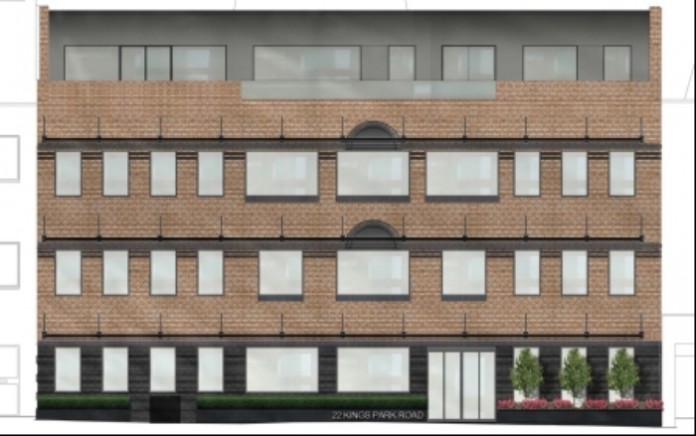CBRE, the world’s leading global real estate advisor, has launched Refurbish to Reinvent, a report which identifies a looming shortage of quality office space in a number of UK regional office markets and predicts the rise in popularity of second hand office space for both occupiers and landlords.
Southampton is a core example of where major speculative refurbishment programmes are delivering much needed Grade A space. Kings Park House is a great example, located in the professional district of Southampton City Centre. The building was acquired by R T Warren (Investments) Ltd in 2011 and in 2015 initial works started on the 15,700 sq. ft. dual fronted offices. The £2m refurbishment has seen all four floors completely stripped back to the core and the upper floors have been extended with full height glazing incorporated to maximize natural light for the offices. With a new VRV heating and cooling system and LED smart lighting the building is now much more energy efficient. The works are due to complete in December 2016 and the available space will be let on a new lease.
Whilst regional office demand has increased significantly over the past two years fuelled by economic growth and positive business sentiment, supply of good quality office space in city centres has struggled to keep up. In terms of total office supply, the markets identified as being most under most pressure based on average annual take-up versus availability are Bristol and Edinburgh with less than two years of supply in each city. In overall terms, Southampton is in a better position with just over three years’ supply, but condition and location have impacted take-up.
This report which takes figures from Q4, 2015, shows that Southampton has just over 2.5 years’ supply of Grade A supply, which when compared to other regional markets such as Aberdeen and Leeds, is reasonable, but lags far behind areas such as the Thames Valley which has in excess of 6.5 years’ supply. However, as of Q3 2016 this figure has reduced further to 1.5 years and looks set to continue to decrease as there is no prospect on new build office stock in the foreseeable future.
Emma Lockey, associate director of CBRE South Central comments: “Southampton is now one of the few Cities where there has been no new speculative office development and with the shortage of suitable sites, this looks set to continue”
“Much of the new supply being delivered outside the South is targeted at larger businesses with average floorplate sizes of ranging from 15,000 sq. ft. to 26,000 sq. ft. The ranks of smaller businesses are swelling in the UK and their appetite for higher quality, well located, aspirational office space, has also increased. Smaller businesses with requirements of less than 10,000 sq. ft. are often not being catered for in these space offerings. Neither can they afford to pay premium prices in most cases.”
With the increasing requirement for sub-10,000 sq. ft. floor plates, Kings Park House will provide self-contained floor plates of between 3,000 and 4,000 sq. ft. in impressive Grade A accommodation. CBRE and Hughes Ellard have been appointed marketing agents for the available space.
With the supply pinch point highlighted in this research, CBRE anticipates that refurbishment of existing stock to a modern category A level will become an increasingly favoured option, both for occupiers and landlords, especially given increased risk associated with large scale redevelopment following the referendum.
From an occupier perspective, choosing a refurbished office provides the benefits of a new high quality office at a lower cost and in a shorter time frame, in contrast to a new redevelopment. It may well be the most pragmatic, savvy, cost effective option, particularly if existing office space is centrally located, possibly benefitting from an attractive car parking ratio (something which is less common in new built stock). There are also key environmental benefits, including the option to attain higher sustainability standards.
From the landlord perspective, there is clear opportunity in repurposing existing office space, particularly in rising markets where prime space is limited or is slow to trickle through into availability. Elsewhere, in locations that have seen substantive amounts of office space lost to other uses, repurposing allows the creation of office space that stands out from other secondary space in the market, thereby maximising income.
Emma Lockey concludes: “Slow delivery of new development has concentrated the availability of Grade A space and we believe refurbishment of existing stock to a modern category A level will become an increasingly favoured option for occupiers and landlords alike.”






















